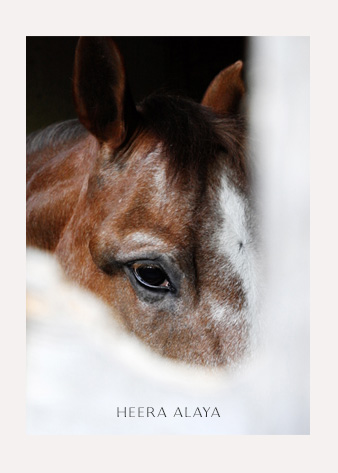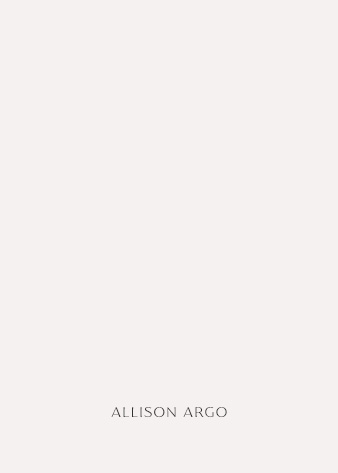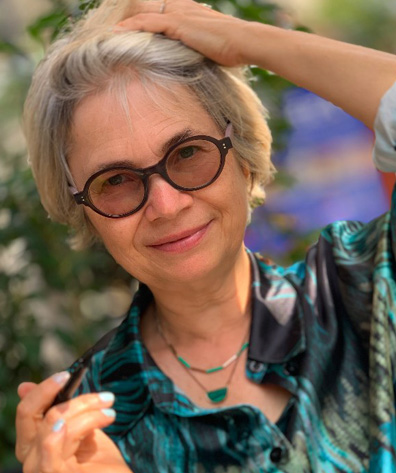
“I want my illustrations to evoke
the sweetness and pleasure
I feel while creating.”
JOSIANE LAUTREDOU
Illustrator, FR
February 29th, 2024
OPEN WINDOWS | In Conversation
Heera Alaya: When we last connected, you were going for a walk on the Breton coastal moor [Brittany, north-western France]. Does an appetite for nature stoke your imagination?
Josiane Lautredou: Nature enchants me. It is a source of well-being, soothing and filling me with wonder. I was born in a village in the West of France and lived there all my childhood. My brothers and I loved playing in our large home garden, the fields, and the forests around the house. My parents also taught me to love and respect all plants, know their particularities, and see beauty in the tiniest plant.
“Even as a child, the aesthetics of plants, flowers, leaves, and butterflies reminded me of many similarities with the human world. In nature, I saw characters, art pieces, people with magnificent dresses or hats, huge mountains in a small piece of moss, and old trees tortured by the wind in the smallest twig.”
Do you love specific flowers?
My mother spoke of flowers and their smells. I love all flowers, especially delicate white flowers, and I love flowers when they smell good. Wildflowers on fences, which smell wonderful, are more beautiful than roses; they are incredible.
From where do you source your flowers?
A person in Northern Ireland [a part of the United Kingdom] loved my work so much that he sent me a bouquet each week. It has been nearly a decade since I started receiving flowers.
What a beautiful story—to have your illustrations reward you with flowers!
Apart from saying hello and an exchange on the weather, we have never met.
Relationships are unique; they don’t have to follow antiquated formulas.
Did you grow up with beautifully illustrated picture books?
Not too much. I grew up during the hippie era, and the countryside lacked exposure, even museums. I remember one summer at the market in Brittany. You could buy a bag with plenty of comic books for girls. However, these books—with graceful illustrations, fabrics, houses, and other details—were missing the illustrator’s name; it was often female illustrators. When I came across the works of American illustrator Gladys Parker, I was in awe—I had never seen such graceful presentations with clean lines.
Did you draw as a child?
As far back as I can remember, I have always loved drawing. It allows me to enter my world and escape the anxiety of life.
How do you bring petals, twigs and leaves to life through your joyful illustrations?
Looking at nature with great recognition and respect for its beauty and diversity is part of my family’s culture. So I can easily project my culture onto illustrations.
The varied colours and graceful forms of petals, leaves and plant elements transport me into a different universe, a poetic one. Seasons play a vital role, too. Spring, with its profusion of blooms, is lovely, making me present “joie de vivre” (as they say in France)—the joy of living with pretty, colourful dresses and a joyful universe. In summer, I often add small shells or berries to my illustrations. Autumn introduces me to failing leaves and chestnuts. In winter, I create Christmas or New Year scenes. Most of the time, I indulge in a personal reverie. A vision that appears to me spontaneously without following a specific theme.
How do you combine nature and characters to create stories?
Living in Paris [the Capital of France] for a significant time, I combine nature with scenes of Parisian life. For instance, you see the Eiffel Tower [a tall tower in Paris built between 1887 and 1889 named after the engineer Gustave Eiffel] featured as a regular character.

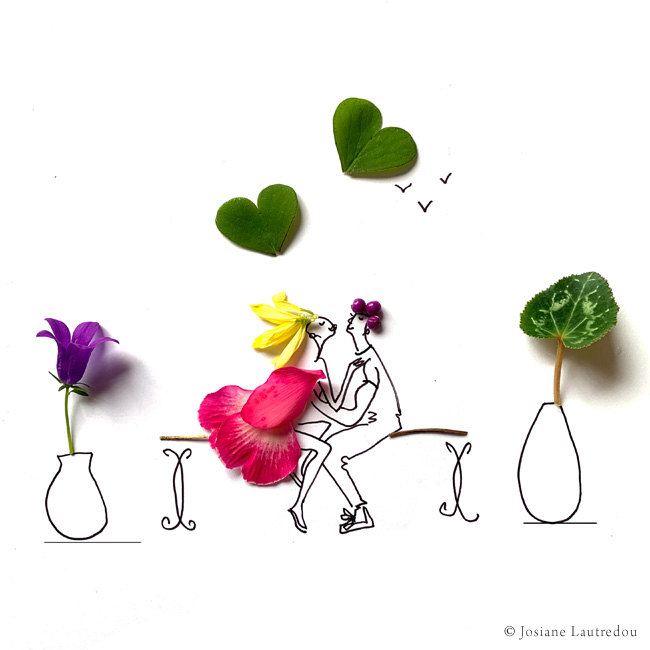
How did you arrive in Paris?
After schooling in my village, I studied in Nantes [Upper Brittany region] and then at Beaux-Arts school in Angers [Western France]. After that, I moved to Paris, where I quickly started working as a designer and stylist for couturiers and in trend offices. At the same time, I regularly drew for French and international magazines ( Vogue, Elle, RyukoTsuchin) and different brands ( Louis Vuitton, Lancôme, Lancel, Longchamp, Novotel) that allowed me to travel all around the world like the USA, India, Japan, China, Qatar and more.)
Were you always an illustrator?
Initially, in Paris, I worked with a computer and a mouse. At that time, I must have been one of the few who did digital drawing, so I had many clients. In time, I changed my style—I began traditional drawing with my hand; this free-flowing and more feminine form gives me much joy.
Do you start with a storyboard, or do you work around the flowers you have? And how many versions do you go through to reach the final illustration?
I always start spontaneously. I place the flower or other main element on a white sheet and draw directly around it with my black felt-tip pen [Josiane pulls out a pen and starts drawing on a piece of paper in front of me]. If necessary, I add other vegetal aspects to enrich the drawing. Most of the time, my illustrations are good the first time—as I had a vision of the finished drawing before I started. The main work is, therefore, done before starting.
But when I do short motion films, it can be more complicated to figure out how to give suitable movements and a good rhythm, requiring more drawings. So, I draw repeatedly to find a good composition, which takes a couple of extra days. If I am content with my film, I post it; if I think it’s not good, I never show it.
How did Flowe, your Instagram account, come to fruition?
I lived and worked in Paris for most of my life. However, in the last decade, I decided to spend more time in my village caring for my elderly, ill father and supporting my mother.
One winter day, I was walking in the rain around the lake of the village, thinking that even though it was my choice to be in the village for my parents, I was sad—I had to leave my much-loved artist life in Paris where I created under the name of Antoinette-Fleur.
It was a gloomy grey winter day. While waiting for sunny days, I stopped, as I often do, to look with attention and wonder at some small moss and blades of grass on the side of the path. I brought these little treasures home to create my first Flowe drawing. I opened an Instagram account—Flowe—and posted my first drawing.
The new venture, Flowe (my new pseudonym ), was just the beginning of a new chapter. I gained followers quickly, and a few brands, like Louis Vuitton and Florajet, contacted me to commission work and draw in front of customers during parties.
Why do you have different Instagram accounts?
In life, we are not only one person mentally—we can be happy and simple or sad and complex. It is hard to do the same thing constantly, so I like to create in different styles. If I were drawing the same style, it would be no different than people doing the same job all their lives.
A few years after my father passed, my mother passed, which wasn’t easy for me. During this period, I started another Instagram, Ode et les chats, to share stories of my Alzheimer’s suffering ageing mother and her cats. Flowe began while caring for my father, and Ode et les chats took shape while I was near my mother.
How do you split your time between Paris and the countryside. And do Paris and Breton influence you differently?
Since my mother passed, I have alternated between Paris and the countryside, spending three weeks (it is less frequent in winter) in the countryside and a month in Paris.
I am more at peace creating in Paris. Paris and Parisians influence me with their omnipresent culture, rooftops, and fashion, which is in stark contrast to the countryside.
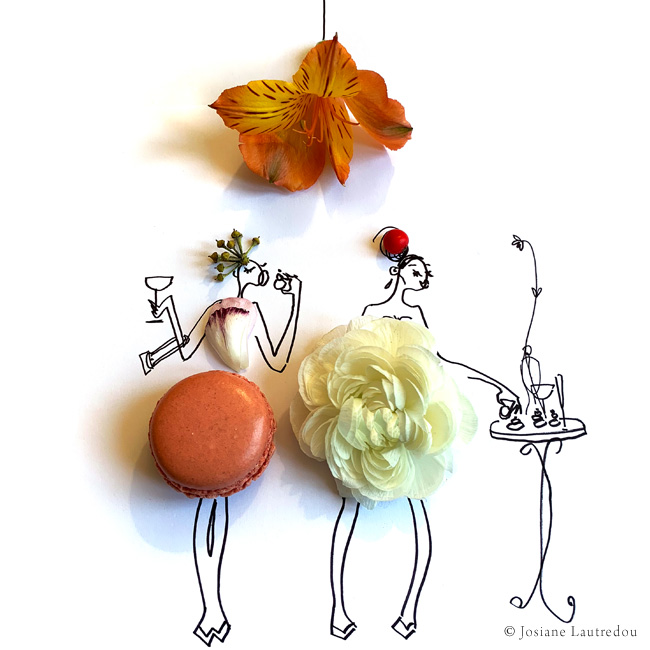
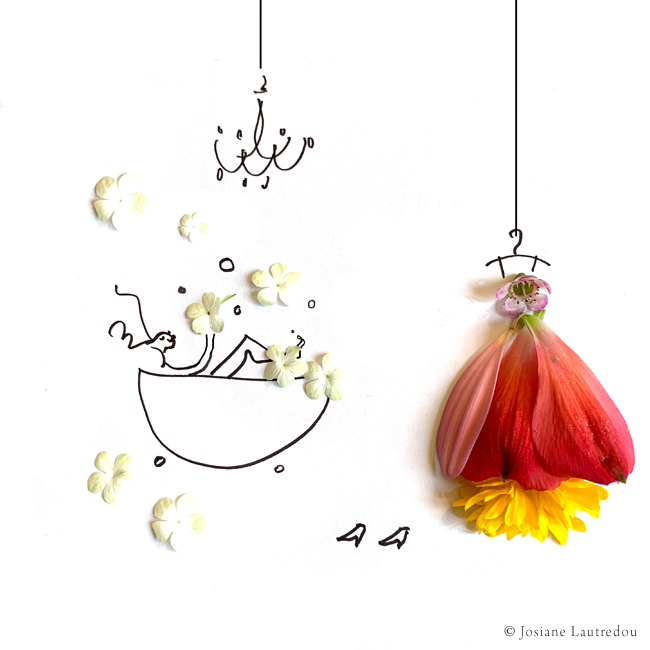
Does solitude help your creativity?
Sure, solitude is the only way to create for me. As a child, I wasn’t strong; I was shy, too sensitive, and afraid of the world. I was more introverted, and my deep feelings made my friends move away. So, I learned to do things for myself. And now, I feel that my creations are a link with others—my private sensitivity and the feeling of the world. Little stars of lightness sprinkled on this earth seem essential to me to enter people’s hearts like a balm.
Earlier, you had to find an agent; of course, it was a man! The best aspect of social media, especially for women, is that it is a place where you can present your talent to the world, and it is easier for women to gain more followers than male creators or influencers. The demand for agents is low; you can be your boss.
Social media also gives the older generation a new possibility of having an open mind. Intelligence is also with poor people who stay in the same place (without the chance to travel)—they can be intellectual and have big hearts.
What emotions are your illustrations designed to evoke within your audience?
Art is political action. In contemporary art, the artist wanted to show the condition of humanity and its suffering. A Jewish psychologist whose parents died in the Holocaust pointed out that the European countryside, and not Germany, has the best musicians and the best writers. So, after violence, there can be creativity.
I know life is hard, and violence and misogyny are all-pervasive. I do not want to add more of this suffering, preferring to put joy and beauty into the world. I want my illustrations to evoke the sweetness and pleasure I feel while creating.
Josiane, are you aware of the many people who admire your work?
Yes. Sometimes, when people send a comment. I do my thing and leave it in the universe.
It also touches me when I make illustrations in front of people, especially young children. I remember a woman telling me that her daughter wouldn’t sleep until she heard my mother sing (I had recorded my mother singing.).
We are all part of something bigger. It is a gift to have positive feedback—it helps me to be. When you think of all the people who lived before us and all the people who will live after us, we are here by miracle. Life is very short.
How can sensitive children, lacking support and encouragement, create and find their path?
When I took care of my parents, I realised I could draw all the time as my parents took care of everything for me (and my mother cooked). It was easy to nurture my interests. In many families, focusing on your desires and dreams is impossible as you have to clean the house, do the chores, and care for other things.
A person must do what they want regardless of what others say. And despite the pressure of comparisons on Instagram, try to stay authentic.
Learn more about Josiane Lautredou.


